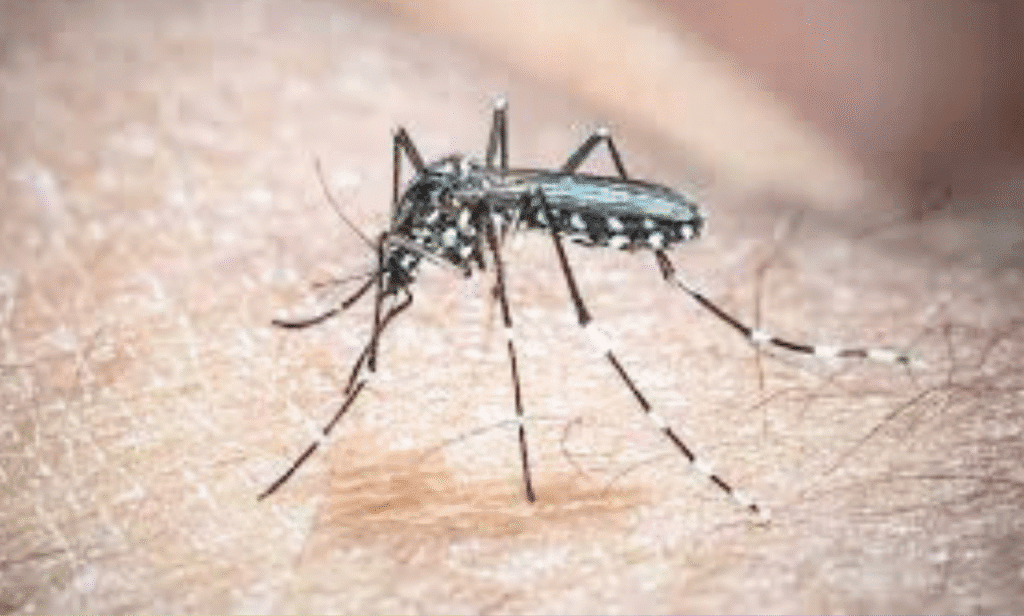
The World Health Organization has issued a stark assessment regarding the future trajectory of chikungunya, a painful and often debilitating viral disease. According to expert analysis, a confluence of environmental and societal shifts is creating a perfect storm for the virus to expand its geographical reach and affect more human populations than ever before. The conditions that facilitate the transmission of this mosquito-borne illness are becoming increasingly prevalent across the globe. This expansion is not a distant threat but an ongoing reality, with health systems in both tropical and temperate regions needing to prepare for potential outbreaks. The virus, once confined to specific pockets of the world, is now demonstrating a clear and unsettling potential to establish itself in new territories where people have little to no immunity. This lack of prior exposure makes these populations exceptionally vulnerable to widespread outbreaks, which can quickly overwhelm local medical infrastructure.
Chikungunya, a word derived from the Kimakonde language meaning “to become contorted,” accurately describes the severe joint pain that is its hallmark symptom. This arthritic pain can be so intense that it forces patients into a stooped posture, making it difficult to walk or perform simple daily tasks. The virus is primarily transmitted to humans through the bite of an infected female Aedes mosquito, notably the Aedes aegypti and Aedes albopictus species. These are the same aggressive daytime biters responsible for spreading other notorious viruses like dengue and Zika. An infected person can suffer from a high fever and debilitating joint pain for weeks, and a significant portion of patients, estimated to be between 30% to 40%, end up developing chronic rheumatic symptoms that can persist for months or even years. This long-term disability carries substantial personal and economic costs, affecting an individual’s ability to work and care for their family.
The primary driver behind the expanding threat of chikungunya is the rapid and widespread proliferation of its mosquito vectors. The Aedes aegypti mosquito, which thrives in urban environments, is perfectly suited to exploit modern human habitation patterns. It prefers to lay its eggs in artificial containers commonly found in and around homes, such as water storage tanks, discarded tires, flower pots, and blocked gutters. The relentless global trend of urbanization, with its dense human populations and abundant breeding sites, provides an ideal ecosystem for these mosquitoes to flourish. Meanwhile, the Aedes albopictus species, often called the Asian tiger mosquito, is notoriously adaptable. It can survive in a wider range of temperatures and is more tolerant of rural and suburban environments, giving it a distinct advantage in colonizing new regions. This adaptability is a key factor in the virus’s geographical spread.
Climate change acts as a powerful force multiplier for the chikungunya threat. Rising global temperatures directly influence mosquito biology and the virus itself. Warmer conditions accelerate the mosquito’s life cycle, leading to faster maturation from egg to adult and more generations of mosquitoes produced each year. Higher temperatures also reduce the extrinsic incubation period, which is the time it takes for the virus to develop inside the mosquito after it has taken an infected blood meal. In a warmer climate, the virus replicates more quickly within the mosquito, meaning the insect becomes infectious and capable of transmitting the pathogen to a new human host in a shorter amount of time. This increases the efficiency of transmission and the speed at which an outbreak can grow. Furthermore, changing precipitation patterns can create more stagnant water pools for breeding, while milder winters allow mosquito populations to survive in areas that were previously too cold.
International travel and trade serve as the express lanes for the global dispersal of the chikungunya virus. An infected traveler who is unaware they are carrying the virus can board a flight from an endemic region and arrive in a new country within hours. If that person is bitten by a local Aedes mosquito population in their new destination, the mosquito can acquire the virus and then begin transmitting it to other people in the community, sparking a local outbreak. This is precisely how chikungunya made its dramatic appearance in the Americas in 2013, after being introduced into the Caribbean. The virus then spread explosively, resulting in over a million confirmed cases within a year across the Americas. This event was a sobering demonstration of how quickly a new pathogen can become established in a susceptible population with no prior immunity. The constant flow of people and goods ensures that this risk remains persistently high.
The challenge of diagnosing chikungunya is a significant hurdle for effective public health response. The initial symptoms are often indistinguishable from those of other febrile illnesses common in the same regions, particularly dengue fever. Both viruses can cause high fever, severe headache, muscle pain, and rash. This clinical overlap can lead to misdiagnosis, which is problematic because the management of severe dengue, which involves careful fluid monitoring, differs from that of chikungunya. Laboratory testing, such as PCR or serology, is required for a definitive diagnosis, but this capacity is not universally available in all primary healthcare settings, especially in resource-limited areas. Without accurate and timely diagnosis, surveillance systems fail to get a true picture of the outbreak’s scale, and control measures may be delayed or misdirected.
Perhaps the most formidable aspect of the chikungunya problem is the absence of a specific antiviral treatment or a commercially available vaccine that is widely approved and deployed. Medical care for chikungunya patients is purely supportive, focusing on alleviating the symptoms. Doctors recommend rest, fluids, and medications like acetaminophen to reduce fever and pain. The use of nonsteroidal anti-inflammatory drugs is generally avoided until dengue can be ruled out due to the risk of bleeding complications. For patients who progress to the chronic phase of the disease, management often requires physical therapy and pain management strategies to help them maintain mobility and quality of life. The lack of a direct therapeutic tool places the entire burden of combating the disease on public health measures aimed at preventing transmission in the first place. This treatment gap underscores the critical importance of preventive strategies.
Given the lack of a vaccine, the frontline defense against chikungunya remains integrated vector management. This is a multi-pronged approach that requires sustained community effort. The most effective action is the systematic elimination of mosquito breeding sites around homes, schools, and workplaces. This involves regularly emptying, covering, or treating any container that can hold water. Public education campaigns are vital to encourage communities to participate in these source reduction activities. In addition to environmental management, personal protective measures are essential for individuals living in or traveling to at-risk areas. Using EPA-approved insect repellents containing DEET, picaridin, or oil of lemon eucalyptus on exposed skin provides excellent protection. Wearing long-sleeved shirts and long pants, especially during the daytime when Aedes mosquitoes are most active, adds a physical barrier. Installing window and door screens and using air conditioning can also help keep mosquitoes out of living spaces.
Surveillance represents the nervous system of any effective public health response to infectious disease threats. A robust surveillance system does several things simultaneously. It tracks human cases of chikungunya to identify hotspots and trends. It also monitors mosquito populations, testing them for the presence of the virus to gauge the level of transmission risk in a community. Strong surveillance data allows health authorities to issue early warnings, target vector control operations where they are most needed, and allocate resources efficiently. In an interconnected world, international data sharing through networks like the Global Arbovirus Initiative is crucial for providing a global picture of the virus’s movement. When countries share information about outbreaks quickly, it gives other nations valuable time to heighten their surveillance and prepare their healthcare systems for a potential imported case.
The economic and social burden of a chikungunya outbreak extends far beyond the healthcare sector. The acute illness forces people to miss work and children to miss school. For those who develop chronic joint pain, the long-term consequences can be devastating. Individuals may find themselves unable to perform their jobs, particularly if they work in manual labor, leading to lost income and reduced productivity for the entire community. The healthcare system itself bears a significant cost from hospitalizations, outpatient visits, and diagnostic tests. The pain and suffering associated with the disease also take a profound psychological toll, reducing overall quality of life and placing a strain on families who must care for affected relatives. The cumulative economic impact of a large outbreak can stifle local development and exacerbate poverty.
The future trajectory of chikungunya is not set in stone, but the warning signs are clear. The continued expansion of urban centers, coupled with the escalating effects of climate change, suggests that the environmental suitability for Aedes mosquitoes will only increase. This means that regions that are currently on the fringes of the virus’s range, including parts of Southern Europe, North America, and East Asia, face a growing risk of localized outbreaks. Preparedness is therefore paramount. National and local health authorities must develop and regularly update outbreak response plans that include clear protocols for surveillance, vector control, laboratory diagnosis, and clinical management. Community engagement is the cornerstone of sustainable prevention, as public cooperation in eliminating breeding sites is more effective and cost-efficient than large-scale insecticide spraying alone. The development of a safe and effective vaccine remains a critical goal for long-term control, offering the best hope for preventing the suffering caused by this debilitating disease.
